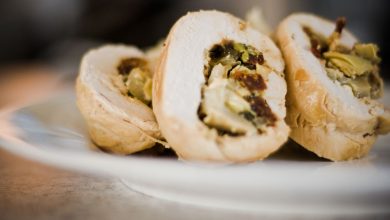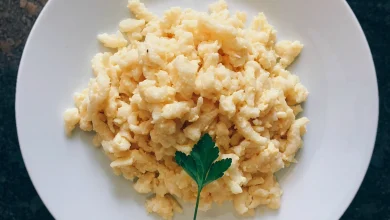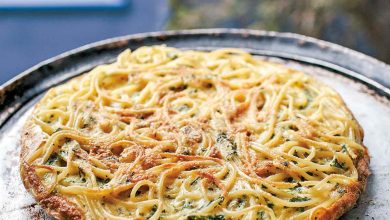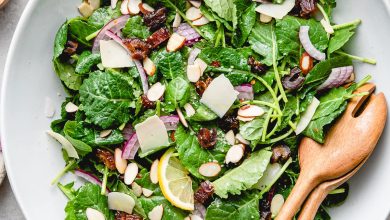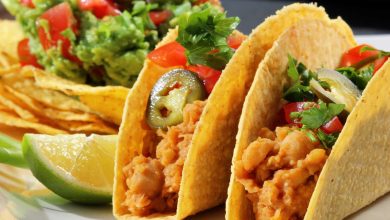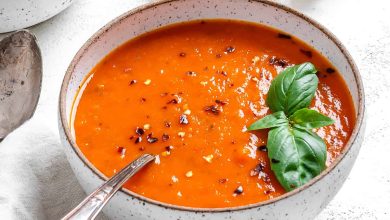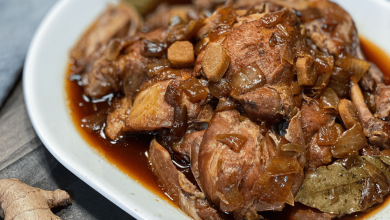Maccheroni with Seitan Ragu
Maccheroni with Seitan Ragu: A Delectable Vegan Dish
Introduction
Maccheroni with Seitan Ragu is a delightful and hearty Italian pasta dish that caters to both vegans and non-vegans alike. This dish combines the rich flavors of a traditional Italian ragu sauce with a plant-based twist using seitan, a high-protein meat substitute. Here, we’ll explore the history, components, preparation steps, and estimated time required to create this mouthwatering meal.
History
The history of Maccheroni with Seitan Ragu is a fusion of traditional Italian cuisine and modern veganism. Ragu itself has a long history in Italian cooking, with variations dating back to the 18th century. However, the plant-based adaptation of this classic dish likely emerged more recently, aligning with the growing popularity of veganism and plant-based diets in the late 20th and early 21st centuries.
Components
To make Maccheroni with Seitan Ragu, you’ll need the following components:
For the Seitan Ragu:
Ingredients:
- 200g seitan, finely chopped or crumbled
- 1 medium onion, finely diced
- 2 cloves garlic, minced
- 1 carrot, finely diced
- 1 celery stalk, finely diced
- 1 can (400g) crushed tomatoes
- 2 tablespoons tomato paste
- 1 teaspoon dried oregano
- 1 teaspoon dried basil
- 1/2 teaspoon red pepper flakes (adjust to taste)
- Salt and black pepper to taste
- 2 tablespoons olive oil
- 1/2 cup vegetable broth
- Fresh basil leaves for garnish
- 300g maccheroni pasta (or any pasta of your choice)
For the Pasta:
- Water for boiling
- Salt for seasoning
- Olive oil for drizzling
Preparation Steps
Seitan Ragu:
-
Heat the olive oil in a large skillet over medium heat. Add the diced onions and cook until translucent, about 3-4 minutes.
-
Stir in the minced garlic, diced carrot, and diced celery. Cook for another 3-4 minutes until the vegetables start to soften.
-
Add the crumbled or finely chopped seitan to the skillet. Cook for 5-7 minutes, stirring occasionally, until the seitan starts to brown.
-
Stir in the tomato paste, dried oregano, dried basil, red pepper flakes, salt, and black pepper. Cook for 2 minutes to allow the flavors to meld.
-
Pour in the crushed tomatoes and vegetable broth. Reduce the heat to low, cover, and let the sauce simmer for 20-25 minutes. Stir occasionally.
Pasta:
-
While the ragu is simmering, bring a large pot of salted water to a boil. Add the maccheroni pasta and cook according to the package instructions until al dente. This usually takes about 8-10 minutes.
-
Drain the cooked pasta, drizzle with a bit of olive oil to prevent sticking, and set aside.
Assembly:
-
Once the seitan ragu is ready, taste and adjust the seasoning if needed. If the sauce is too thick, you can add a bit more vegetable broth to reach your desired consistency.
-
To serve, place a portion of cooked maccheroni pasta on each plate, and generously ladle the seitan ragu over the pasta.
-
Garnish with fresh basil leaves and a sprinkle of vegan Parmesan cheese if desired.
Estimated Time
Preparing Maccheroni with Seitan Ragu is a delightful culinary adventure that typically takes around 45-50 minutes from start to finish. This includes prep time, cooking, and assembly.
Now, whether you’re cooking for a special occasion or enjoying a comforting homemade meal, Maccheroni with Seitan Ragu offers a delightful combination of Italian tradition and plant-based goodness. Bon appétit!
Nutrition Facts and Health Information for Maccheroni with Seitan Ragu
Maccheroni with Seitan Ragu is a flavorful and satisfying vegan dish, and its nutritional profile reflects a balance of carbohydrates, protein, and essential nutrients. Here are the nutrition facts and some health information for this recipe:
Nutrition Facts (Per Serving):
- Calories: Approximately 350-400 calories per serving.
- Protein: Seitan, the primary protein source, provides around 20-25 grams of protein per serving.
- Carbohydrates: Approximately 60-70 grams of carbohydrates per serving, primarily from pasta and vegetables.
- Fiber: Provides 5-7 grams of dietary fiber, aiding in digestion and promoting a feeling of fullness.
- Fat: Contains 5-7 grams of healthy fats, mostly from olive oil.
- Vitamins and Minerals: Rich in vitamins like vitamin A, vitamin C, vitamin K, and various B vitamins. It’s also a good source of minerals like potassium and iron.
- Sodium: The sodium content can vary based on the amount of added salt but is generally moderate.
Health Information:
-
High in Protein: Seitan, made from wheat gluten, is a high-protein meat substitute. Protein is essential for muscle maintenance and repair.
-
Low in Saturated Fat: This dish is low in saturated fats, making it heart-healthy. The olive oil used is a source of monounsaturated fats, which are considered good for heart health.
-
Rich in Fiber: The dish’s fiber content, mainly from vegetables and whole wheat pasta, supports digestive health and helps control blood sugar levels.
-
Vitamins and Minerals: Maccheroni with Seitan Ragu provides a variety of vitamins and minerals, including vitamin A for eye health, vitamin C for immunity, and iron for oxygen transport in the body.
-
Low Cholesterol: Since this recipe is vegan and doesn’t use animal products, it is naturally cholesterol-free.
-
Plant-Based: Being plant-based, this dish aligns with a vegan or vegetarian diet, which is associated with various health benefits, including lower risk of heart disease and certain cancers.
-
Customizable: You can adjust the ingredients to suit your dietary preferences or nutritional needs. For example, using whole wheat pasta increases fiber content, and adding more vegetables boosts vitamins and minerals.
-
Portion Control: Be mindful of portion sizes to manage calorie intake. This dish is filling, so you can control portion size while still enjoying a satisfying meal.
-
Allergen Considerations: While seitan is a gluten-based product and not suitable for those with gluten sensitivities or celiac disease, there are gluten-free alternatives available, such as tofu or legume-based proteins, that can be used to make a similar ragu sauce.
-
Balance: As with any meal, it’s essential to balance your overall diet. Incorporating a variety of foods ensures you get a wide range of nutrients.
Remember that specific nutritional values can vary based on the exact ingredients and portion sizes used. If you have specific dietary concerns or goals, it’s a good idea to consult with a registered dietitian or nutritionist for personalized guidance.

